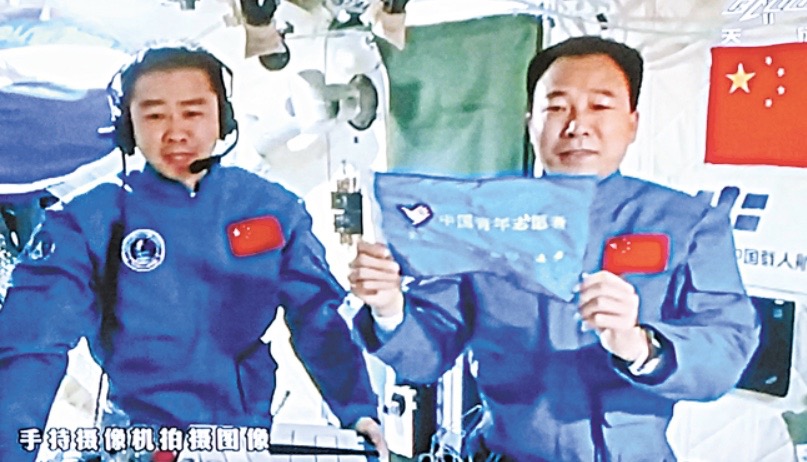Chinese Astronauts Prepare for Return to Earth

Two Chinese astronauts have entered the Shenzhou-11 re-entry module to prepare for their return to Earth.
Space travelers Jing Haipeng and Chen Dong have lived and worked in the Tiangong-2 space lab for 30 days, the longest-ever stay in Earth orbit by Chinese astronauts. [China's Tiangong-2 Space Lab Explained (Infographic)]
Separation process
Prior to the separation of Shenzhou-11 with the space lab — which occurred at 12:41 p.m. Thursday (Nov. 17) Beijing time (11:41 p.m. Wednesday EDT), according to Chinese media reports — the astronauts transferred experimental devices and items from Tiangong-2 to the spacecraft’s re-entry module.
"The entire separation process was very smooth. Both Tiangong and the spacecraft completed their designated moves, and the process to start operation was quite normal," reported Chen Xianfeng, director of the overplan office of Beijing Aerospace Control Center.
Status check
In an interview with CCTV-Plus, Chen added that, during the course of separation — the 30-meter (100 feet) stop, the 120-meter (400 feet) stop, the final separation and the move for spacecraft to reset flight — "all the moves were very good."
"Both Tiangong and Shenzhou are in a normal state at present and various missions are going smoothly," Chen said.
Shenzhou-11 is scheduled to fly to a position 400 feet away from Tiangong-2. Once at that distance, the two-person craft will stay in orbit until ground control teams evaluate its status, and then give the final go for the crew to come home.
Breaking space news, the latest updates on rocket launches, skywatching events and more!
Re-entry point
"Tonight we will conduct an orbit control to the spacecraft to take aim at the re-entry point, because after the separation, there will be a separating force between the spacecraft and Tiangong, which will cause a tiny deviation from the orbit. We have to readjust to make the re-entry control more accurate," Chen explained to CCTV-Plus.
Around one day later, the re-entry module will descend from an orbit about 244 miles (393 kilometers) above Earth.
The spacecraft is expected to touch down in the Siziwang Banner in north China’s Inner Mongolia Autonomous Region.
The Tiangong-2 space lab is remaining in its orbit, carrying out remote experiments.
In April 2017, China’s first cargo spacecraft – the Tianzhou-1 — will be launched via a Long March 7 rocket to dock with the space lab.
For video views of the Shenzhou-11 crew preparing for their return to Earth, go to:
http://l3-pv.news.cctvplus.com/2016/1117/8036789_Preview_1479386963751.mp4
Follow us @Spacedotcom, Facebook or Google+. Originally published on Space.com.

Leonard David is an award-winning space journalist who has been reporting on space activities for more than 50 years. Currently writing as Space.com's Space Insider Columnist among his other projects, Leonard has authored numerous books on space exploration, Mars missions and more, with his latest being "Moon Rush: The New Space Race" published in 2019 by National Geographic. He also wrote "Mars: Our Future on the Red Planet" released in 2016 by National Geographic. Leonard has served as a correspondent for SpaceNews, Scientific American and Aerospace America for the AIAA. He has received many awards, including the first Ordway Award for Sustained Excellence in Spaceflight History in 2015 at the AAS Wernher von Braun Memorial Symposium. You can find out Leonard's latest project at his website and on Twitter.
